Test: The End of Bipolarity - Case Based Type Questions - 1 - Humanities/Arts MCQ
10 Questions MCQ Test Political Science Class 12 - Test: The End of Bipolarity - Case Based Type Questions - 1
Read the following cartoon and answer the following questions:
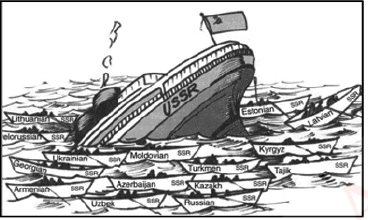
Q. What event officially marked the end of communism in the Soviet Union?

Read the following cartoon and answer the following questions:
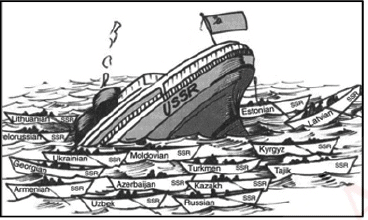
Q. How many countries did the Soviet Union disintegrate?

Read the following cartoon and answer the following questions:
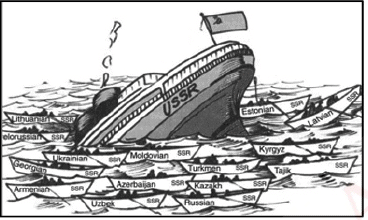
Q. What lead to the dissolution of the Soviet Union?

Read the following cartoon and answer the following questions:
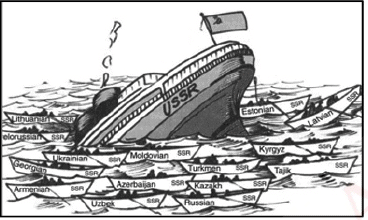
Q. How was the collapse of the USSR seen by the West?
Study the cartoon given below and answer the following questions:
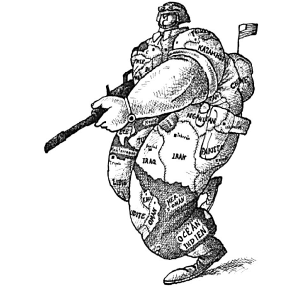
Q. Why have the names of so many countries been written on the uniform of the soldier?
Study the cartoon given below and answer the following questions:

Q. Which of the countries listed below was never invaded by USA?
the cartoon given below and answer the following questions:
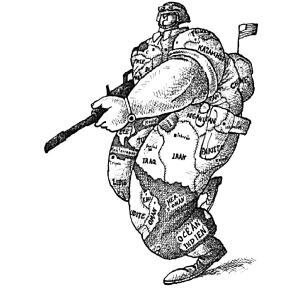
Q. Which country is represented by this mighty soldier?
Study the cartoon given below and answer the following questions:
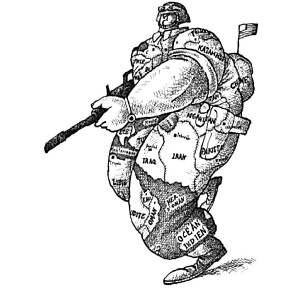
Q. What message does this cartoon give to the international community?
Read the following excerpt and answer the questions that follow:
A coup took place in 1991 that was encouraged by Communist Party hard-liners. The people had tasted freedom by then and did not want the old style rule of the Communist Party. Boris Yeltsin emerged as a national hero in opposing this coup. The Russian Republic, where Yeltsin won a popular election, began to shake off centralised control. Power began to shift from the Soviet centre to the republics, especially in the more Europeanised part of the Soviet Union, which saw themselves as sovereign states. The Central Asian republics did not ask for independence and wanted to remain with the Soviet Federation. In December 1991, under the leadership of Yeltsin, Russia, Ukraine and Belarus, three major republics of the USSR, declared that the Soviet Union was disbanded. The Communist Party of the Soviet Union was banned. Capitalism and democracy were adopted as the bases for the post-Soviet republics. The declaration on the disintegration of the USSR and the formation of the Commonwealth of Independent States (CIS) came as a surprise to the other republics, especially to the Central Asian ones. The exclusion of these republics was an issue that was quickly solved by making them founding members of the CIS. Russia was now accepted as the successor state of the Soviet Union. It inherited the Soviet seat in the UN Security Council. Russia accepted all the international treaties and commitments of the Soviet Union. It took over as the only nuclear state of the post-Soviet space and carried out some nuclear disarmament measures with the US. The old Soviet Union was thus dead and buried.
Q. Which were the three major republics of USSR?
Read the following excerpt and answer the questions that follow:
A coup took place in 1991 that was encouraged by Communist Party hard-liners. The people had tasted freedom by then and did not want the oldstyle rule of the Communist Party. Boris Yeltsin emerged as a national hero in opposing this coup. The Russian Republic, where Yeltsin won a popular election, began to shake off centralised control. Power began to shift from the Soviet centre to the republics, especially in the more Europeanised part of the Soviet Union, which saw themselves as sovereign states. The Central Asian republics did not ask for independence and wanted to remain with the Soviet Federation. In December 1991, under the leadership of Yeltsin, Russia, Ukraine and Belarus, three major republics of the USSR, declared that the Soviet Union was disbanded. The Communist Party of the Soviet Union was banned. Capitalism and democracy were adopted as the bases for the post-Soviet republics. The declaration on the disintegration of the USSR and the formation of the Commonwealth of Independent States (CIS) came as a surprise to the other republics, especially to the Central Asian ones. The exclusion of these republics was an issue that was quickly solved by making them founding members of the CIS. Russia was now accepted as the successor state of the Soviet Union. It inherited the Soviet seat in the UN Security Council. Russia accepted all the international treaties and commitments of the Soviet Union. It took over as the only nuclear state of the post-Soviet space and carried out some nuclear disarmament measures with the US. The old Soviet Union was thus dead and buried.
Q. Which country became the successor state of the Soviet Union?
|
34 videos|246 docs|52 tests
|




















